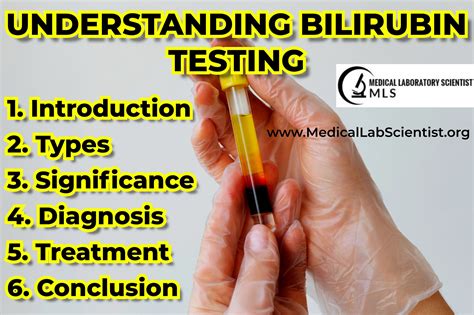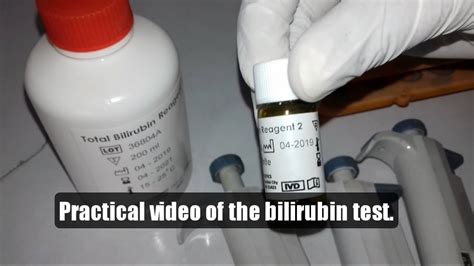Intro
Discover 5 ways a bilirubin test reveals liver health, jaundice diagnosis, and bilirubin levels, helping detect conditions like hyperbilirubinemia, liver disease, and hemolytic anemia.
Bilirubin is a yellow compound that occurs in the normal catabolic pathway that breaks down heme in red blood cells. The level of bilirubin in the blood is an important indicator of liver function and health. Elevated levels of bilirubin can cause jaundice, a condition characterized by a yellowing of the skin and eyes. A bilirubin test is used to measure the levels of bilirubin in the blood, and it is a crucial diagnostic tool for detecting liver diseases, hemolytic anemias, and other conditions.
The importance of bilirubin tests cannot be overstated, as they provide valuable insights into the liver's ability to process and eliminate bilirubin. Abnormal results can indicate a range of health issues, from mild liver dysfunction to life-threatening conditions like liver cancer. In this article, we will delve into the world of bilirubin tests, exploring the different types, their applications, and what the results mean for our health.
Bilirubin tests are a cornerstone of medical diagnosis, allowing healthcare professionals to identify potential health problems early on. By understanding the different ways bilirubin tests can be used, we can appreciate the complexity and importance of this diagnostic tool. From newborn screening to monitoring liver disease progression, bilirubin tests play a vital role in maintaining our health and wellbeing.
Introduction to Bilirubin Tests

Types of Bilirubin Tests
The most common types of bilirubin tests include total bilirubin, direct bilirubin, and indirect bilirubin. The total bilirubin test measures the overall level of bilirubin in the blood, while the direct and indirect bilirubin tests measure the levels of conjugated and unconjugated bilirubin, respectively.Applications of Bilirubin Tests

Interpreting Bilirubin Test Results
Interpreting bilirubin test results requires a thorough understanding of the normal ranges for bilirubin levels in the blood. The normal range for total bilirubin is typically between 0.1 and 1.2 milligrams per deciliter (mg/dL), while the normal range for direct bilirubin is typically between 0.0 and 0.3 mg/dL. Elevated levels of bilirubin can indicate a range of health issues, from mild liver dysfunction to life-threatening conditions like liver cancer.5 Ways Bilirubin Tests Are Used

Bilirubin Test Procedure

Risks and Complications of Bilirubin Tests
The risks and complications of bilirubin tests are minimal, but they can include bleeding, bruising, and infection at the blood draw site. In rare cases, bilirubin tests can cause an allergic reaction to the needle or the blood collection equipment.Preparation for Bilirubin Tests

What to Expect During a Bilirubin Test
During a bilirubin test, a healthcare professional will collect a blood sample from a vein in the arm. The procedure typically takes a few minutes, and it may cause some discomfort or pain. After the test, the blood sample is sent to a laboratory for analysis, and the results are typically available within 24 hours.Conclusion and Next Steps

We invite you to share your thoughts and experiences with bilirubin tests in the comments below. Have you had a bilirubin test before? What were your results, and how did they affect your health journey? By sharing our stories and experiences, we can raise awareness about the importance of liver health and the role of bilirubin tests in maintaining our wellbeing.
What is the normal range for bilirubin levels in the blood?
+The normal range for total bilirubin is typically between 0.1 and 1.2 milligrams per deciliter (mg/dL), while the normal range for direct bilirubin is typically between 0.0 and 0.3 mg/dL.
What are the risks and complications of bilirubin tests?
+The risks and complications of bilirubin tests are minimal, but they can include bleeding, bruising, and infection at the blood draw site. In rare cases, bilirubin tests can cause an allergic reaction to the needle or the blood collection equipment.
How do I prepare for a bilirubin test?
+Preparation for bilirubin tests typically involves fasting for 4-6 hours before the test, as well as avoiding certain medications that can affect the results. It is also essential to inform the healthcare professional about any medical conditions or allergies, as these can affect the test results.
